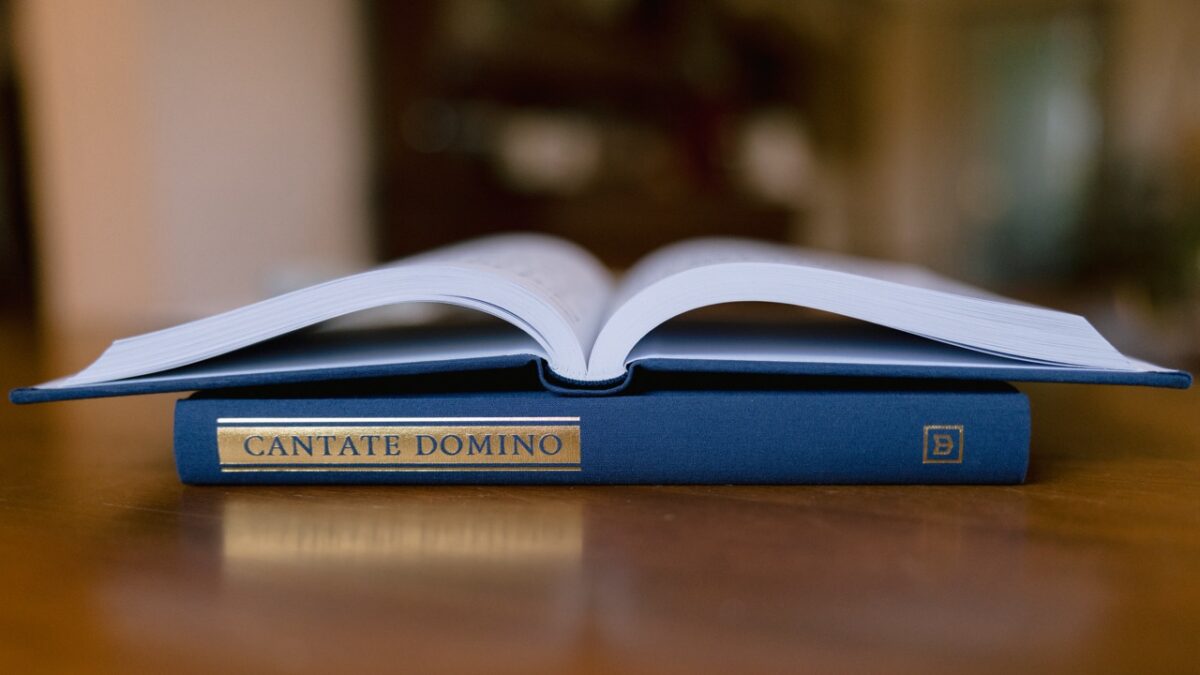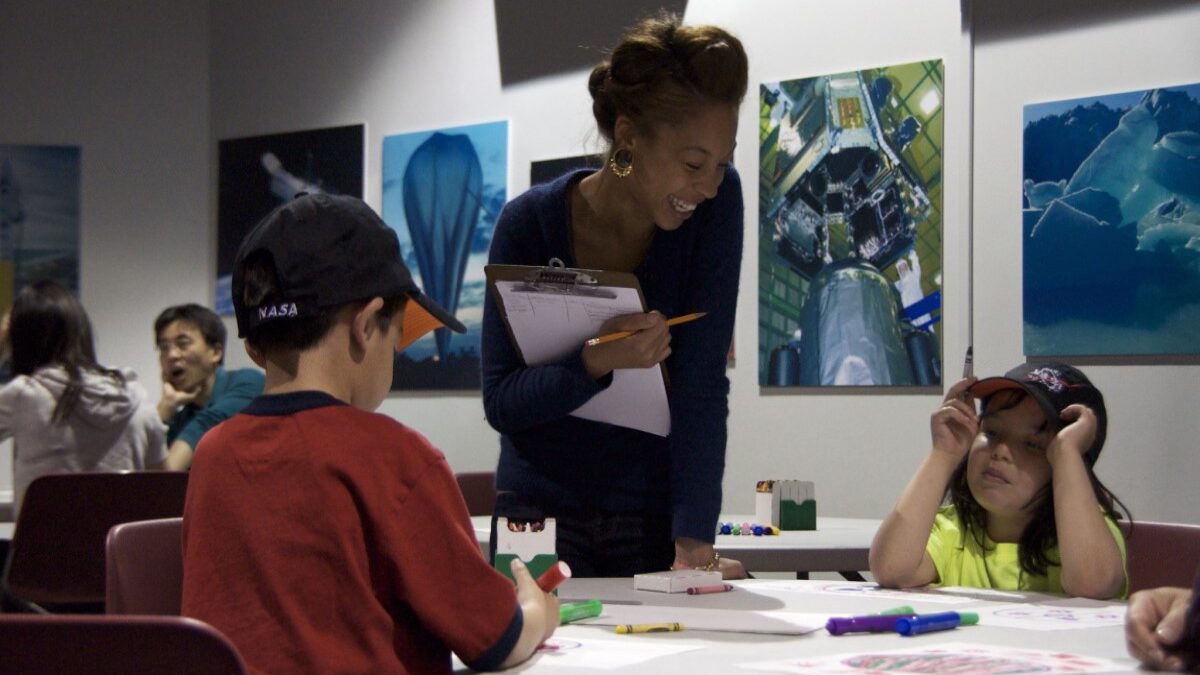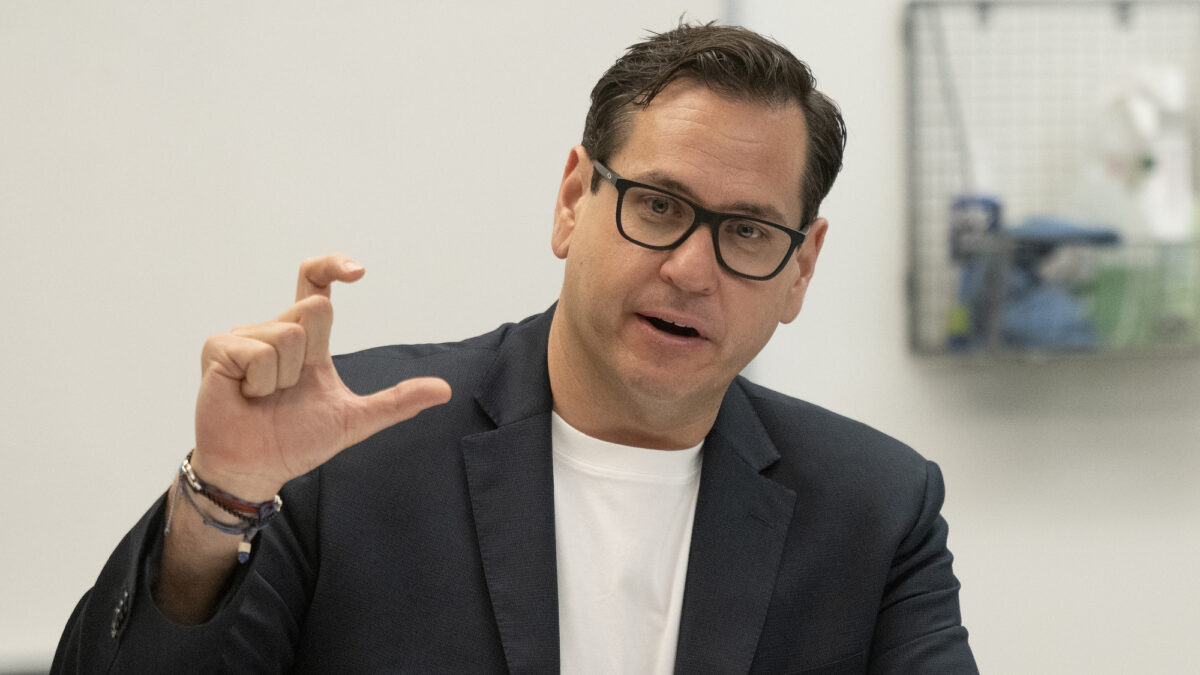The classical schooling movement has become a source of retrieval, revival even, of so many sources of knowledge and human flourishing abandoned by modernity. The classical Christian school can also renew the rich Christian heritage and vitality of hymn singing. To that end, Preston Atwood’s just published hymnal, Cantate Domino: A Liturgical Songbook for Classical Christian Schools, shows how hymnody is of great educational benefit.
In church history, two simple actions constantly emerge: systematic teaching of theology, and imaginative engagement through singing hymns.
Consider the depths of theology involved in processing the dual nature of Christ: fully God, and fully man, united in his sacrificial death. A course in systematic theology might spend three months and several thousand pages explicating the notions of a “sacred head” “weighed down” by thorns, abuse, and scorn, drawing the contrast with a “visage” that was “bright as morn.”
Bernard of Clairvaux took these concepts, arranging them poetically and musically, and his hymn “O Sacred Head, Now Wounded” has taught deep Christology to millions of Christians, of all ages, since the 11th century.
O sacred head now wounded
With grief and shame weighed down
Now scornfully surrounded
With thorns thine only crown
How pale Thou art with anguish
With sore abuse and scorn
How does that visage languish
Which once was bright as morn
Through his hymn, Bernard draws the mind of the worshiper to the heights of Christian theology: Christ as fully God and fully man, with his two natures united in suffering to bring about the redemption of mankind. In this manner, a Christian absorbs far more theology through singing in weekly worship than through academic study.
This indicates the evangelical church of the 21st century is in trouble. Hymn singing is on the decline (see here, here, and here); evangelical Protestant churches typically favor praise bands and contemporary Christian music for their weekly gatherings. Such songs are far more comfortable for some guests and unbelievers. Such an environment, however, comes at a cost.
In his preface, Atwood articulates a larger goal than preservations. Atwood seeks:
to cultivate [students’] affections, stir their moral imaginations, and develop their aesthetic sensibilities by putting in their hands a compendium of abiding creeds, music, and prayers. I wanted to provide an effective means of ‘soulcraft,’ tuning students’ hearts through exposing them to objectively true, good, and beautiful expressions of the Gospel’s realities. I desired that they establish deep roots, learn their place in God’s story, know their dependance on Christ, and experience the much larger and older tradition of which they are a part. Such moorings are necessary in a culture that disavows metanarratives and objective truths.
Cantate Domino succeeds. It highlights the doctrinal unity of Christianity organized around the highest days of the Christian calendar. It contains elements clearly written for the life of a school, but it could also work for churches, para-church ministries, or families worshiping at home.
Atwood uses a clear pattern of bolded and unbolded text to structure call-and-response passages throughout the hymnal. Scripture passages, confessions, assembly moments, famous quotations from C.S. Lewis and G.K. Chesterton, and responsories are all arranged for clear audience participation. Consider two of the “Assembly Sayings”:
“Why are we in school today? To glorify and honor God.”
“How can we glorify God at school? By working hard and loving one another.”
As with the poetry, historical timelines, math facts, and other key knowledge students memorize in classical schools, these lines help engrain eternal truths in student memory.
Prayers
The prayers section includes prayers from saints across the ages. Arranged in morning, midday, and dismissal sections, the hymnal’s structure makes it clear which sections apply to which purposes. Early Christian, Catholic, Celtic, and Puritan prayers are arranged chronologically, showing students the breadth of Christian prayer.
Consider this “Prayer before Study” from Thomas Aquinas, c. 1250 A.D.:
Creator of all things, true source of light and wisdom, origin of all being, graciously let a ray of your light penetrate the darkness of our understanding. Take from us the double darkness in which we have been born, an obscurity of sin and ignorance. Give us keen understanding, retentive memories, and the ability to grasp things correctly and fundamentally. Grant us the talent of being exact in our explanations and the ability to express ourselves with thoroughness and charm. Point out the beginning, direct the progress, and help in the completion. We ask this through Christ our Lord. Amen!
Cantate Domino strikes the right kind of ecumenical note by celebrating the common Christian tradition. It opens with Anglican priest Mark Hamilton explaining the value and nature of Gregorian chant: “Good chanting, at its core, is the rhythm of speech (as one would recite a poem aloud, with the proper word/syllable stresses), sung on the printed pitches.” Chanting is a way for students, as all Christians, to learn the arts of vocal unity.
Hymns old and new are present: “Matt Papa,” “Keith Getty,” and “City Alight” fit alongside “Martin Luther,” “Charles Wesley,” and anonymous “Irish poets.” Liturgies are included from collections both ancient and contemporary; hymnody and liturgical formation are not just ancient practices; they continue into the present.
Virtue Formation
Cantate Domino equips leaders to structure time with an eye on student formation. Schools need ways to help students recall that the purpose of their education is not just knowledge acquisition, but virtue formation.
The “character call-out” recognizes the role short, pithy sayings have in forming the moral imagination. Children need abstract virtues made concrete. Note the specificity which these statements direct the speaker to consider:
Attentiveness…Listening with ears, eyes, and heart.
Faith…Trusting God to do what he says.
Responsibility…Doing what I have been entrusted to do.
Liturgies written for the Christian classical school equip school leaders with elevated speech and substantive passages to make every moment in the school count for the formation of students.
The classical renewal movement is making great strides in recovering core knowledge in the humanities and sciences. It cannot abandon, either, what our forebears considered the “queen of the sciences”: theology. With Atwood’s contribution, the rapidly expanding coalition of these beautiful schools has a single volume that brings together the prayers, hymns, and liturgies of the Christian tradition to redeem every moment for the glory of God.









